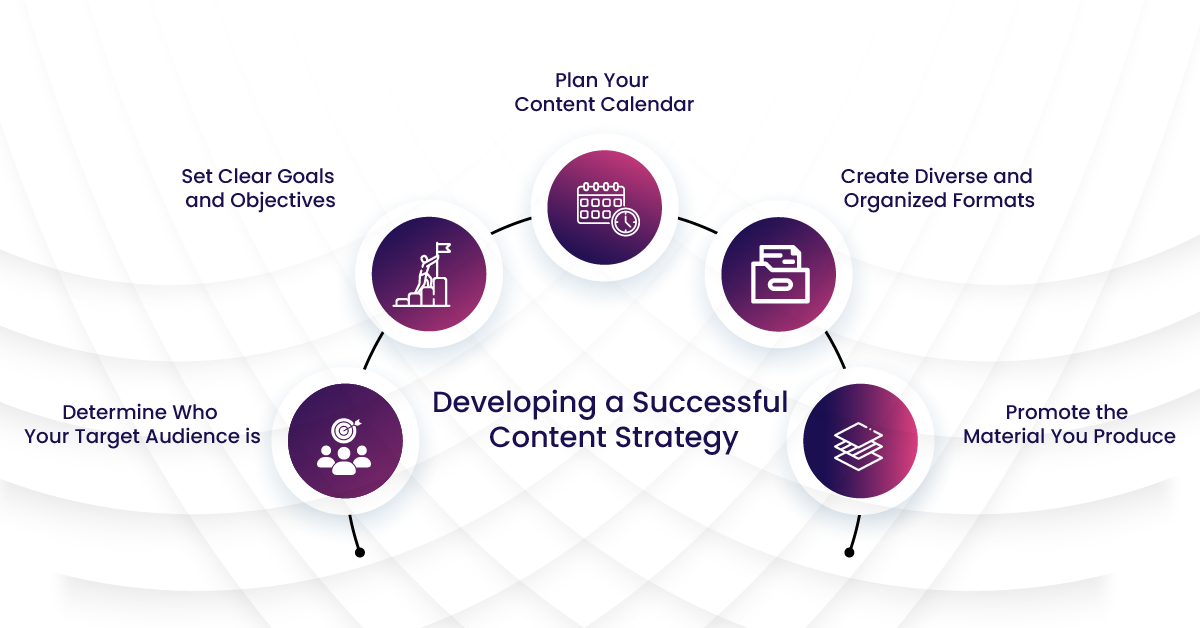6 min read
Every business that wants to succeed in the modern digital era must have a strong online presence. The ultimate goal of online visibility is to appear on Google’s search results page 1. However, how does Google decide which websites are worthy of those highly sought-after top spots? To increase your website’s chances of showing up on Google’s search engine results page (SERP), we will first dive into the nuances of Google’s ranking algorithm in this blog post and provide useful SEO tips and strategies.
Table of Contents
Recognizing the Algorithm Behind Google Search
The intricate system of guidelines and computations known as Google’s search algorithm establishes the value and pertinence of web pages in response to user inquiries. Several established factors affect search rankings, even though the algorithm’s precise workings are kept under wraps. These consist of:
1.1 Keywords and their Significance
When evaluating whether a web page is relevant to a user’s search query, keywords are very important. Integrating relevant keywords into your website’s content will improve its position on Google’s ranking, as it aligns with Google’s ranking algorithm. However, finding a happy medium between optimizing your keywords and producing informative, interesting content for your readers is crucial.
1.2 Backlinks as well as Authority
Google considers external links pointing to your website, backlinks, and endorsements. Your website will appear more authoritative to search engines with its high-quality backlinks. Increasing the number of backlinks to your website through outreach, guest blogging, and producing content that readers want to share can greatly increase its search engine ranking.
1.3 The User Experience and the Performance of the Website
Google gives websites priority for an easy-to-use interface. Website usability, mobile friendliness, and page load speed are just a few of the criteria Google uses to rank web pages. To increase your chances of appearing higher in Google’s search engine results, you must ensure that your website is mobile-responsive, speed-optimized, and has an intuitive user interface.
SEO Ranking Advice for Getting on Page One of Google’s Ranking Algorithm
With our foundational knowledge of Google’s search algorithm now established, let us look at some practical SEO advice that can help you rank on page one:
2.1 Conduct Extensive Keyword Analysis
Researching potential keywords is crucial before you begin website optimization. You may better serve your target audience’s needs and increase your chances of appearing higher in Google’s search engine results by finding the terms and phrases they use when searching. Find low-competition, high-volume, and relevant keywords by using keyword research tools.
2.2 Produce Interesting and Informative Material
In the realm of SEO, content is king. Developing high-quality, educational, and engaging content for your website is crucial to raising search engine rankings and drawing in and keeping users. Ensure your material is thoroughly researched, appropriately formatted, and beneficial to the people reading it. Include pertinent keywords organically in your writing, but refrain from stuffing your content with them to the point where Google penalizes you.
2.3 Optimize Components of the Page
Enhancing the visibility of different elements on your web pages in search results is known as on-page optimization. Among the crucial on-page components to optimize are:
- Title tags: Create captivating title tags packed with keywords and effectively summarize the information on each page.
- Meta descriptions:
- Compose compelling meta descriptions to persuade searchers to click on your link.
- Heading tags: To organize and draw attention to important points in your content, use heading tags (H1, H2, etc.).
- URL structure: Make sure your URLs have descriptive content and pertinent keywords.
- Image optimization: Optimize images by employing alt text that provides context and compressing them for quicker loading times.
2.4. Create a Powerful Backlink Profile
As was previously mentioned, backlinks are essential for establishing the authority and visibility of your website in search results. Concentrate on obtaining solid backlinks from websites that are respected in your field. Some efficient backlink-building techniques include guest posting, producing worthwhile content that draws in natural backlinks, and contacting influencers or business leaders for possible partnerships.
2.5 Track and Enhance Click-Through Rates (CTR)
In search engine results pages, click-through rates (CTR) are the percentage of users that click on the link to your website. A higher CTR indicates that your listing is compelling and relevant to users’ search queries. Make your meta titles and descriptions more captivating by optimizing them to increase your click-through rate. Use schema markup to add rich snippets, such as product details, reviews, and star ratings, to your listings.
Making the Most of AI-Powered Resources for Success in SEO
The SEO industry has revolutionized in recent years thanks to AI-powered tools that automate numerous tasks and offer insightful data. The following artificial intelligence-powered tools can help you optimize your SEO strategy:
3.1 Keyword Research Tools
Deep keyword research data is provided by tools such as Ahrefs, Moz Keyword Explorer, and SEMrush, which use AI algorithms. You can track keyword rankings, find new keyword opportunities, and determine the relevancy of keywords using these tools.
3.2 Tools for Content Optimization
Content optimization tools with artificial intelligence (AI), such as Clearscope and Surfer SEO, examine the pages that rank highest for a particular keyword and offer suggestions on how to make your content more competitive and relevant. With these tools, you can ensure that the content you provide meets user and search engine expectations.
3.3 Link-Building Tools
The task of locating relevant influencers or websites for outreach campaigns is made easier by AI-powered link-building tools. Using these tools saves time and effort when building high-quality backlinks and automating prospecting, outreach, and relationship management.
3.4 Rank Tracking Tools
Tools that track keyword rankings accurately, like Serpstat and AccuRanker, use AI algorithms. They give you up-to-date information on how well your website performs in search results and let you watch your SEO tactics’ success.
Developing a Successful Content Strategy

Developing a clear content strategy is essential to long-term search engine optimization success. When creating a successful content strategy, keep the following important steps in mind:
4.1. Determine Who Your Target Audience is.
To create material that attracts your audience’s attention, you must thoroughly understand them. To determine who your audience is and what they want, conduct market research, examine customer demographics, and obtain information from analytics tools such as Google Analytics.
4.2 Set Clear Goals and Objectives
Establish precise objectives for your content strategy. Is increasing website traffic something you are after? Produce leads? Boost the awareness of your brand. Establishing clear objectives will facilitate the creation of focused content that supports these goals.
4.3 Plan Your Content Calendar
Provide a content calendar specifying the kind of content you will produce when it will release and who will be in charge. This will ensure consistency in publishing and keep you organized as well.
4.4 Create Diverse and Organized Formats
Do not confine your writing to articles or blog posts alone. Try experimenting with various content formats, like podcasts, infographics, interactive quizzes, and videos, to see what works best for your audience and draw in new listeners.
4.5 Promote the Material You Produce
Only half the fight is won when excellent content is created; promotion is just as crucial. To expand the audience for your content and boost the likelihood that it will be shared, use influencer relationships, email marketing campaigns, social media platforms, and paid advertising.
Enhancing User Experience and Bounce Rate Analysis
The percentage of people who visit one page on your website and then leave without engaging further is known as the “bounce rate.” A high bounce rate might harm your search rankings because it tells Google that users are not finding what they are looking for on your website. The following techniques are use to assess bounce rates and enhance the user experience:
5.1 Analyze User Behavior Using Analytics Instruments
Google Analytics and similar tools: Analyze insightful data about how people use your website. Examine data like time spent on the page, pages that users leave, or behavior flow to find high-bouncing pages or user drop-off points.
5.2 Enhance the Speed of Page Loading
A website that loads slowly can irritate visitors and increase their bounce rate. Use image compression, CSS and JavaScript file minification, browser caching, and dependable hosting to improve the performance of your website.
5.3 Improve Website Functionality
Ensure your website has user-friendly navigation menus that make it simple for visitors to locate what they are looking for. Incorporate internal links into your content to direct readers to relevant pages on your website.
5.4 Optimize for Mobile Devices
Optimizing your website for mobile responsiveness is essential for most internet use. It is optimizing websites via mobile devices. By testing your website, you can ensure that it works properly for users on various screens and devices.
5.5 Provide Valuable and Relevant Content
The secret to lowering bounce rates is relevance. Ensure the information in your content offers readers value and fulfils the promise made in the search results. Captivate readers with content that will organize well and addresses their issues or questions.
Conclusion
A comprehensive structure includes
- comprehending Google’s ranking algorithm,
- implementing efficient SEO tactics,
- utilizing AI-powered tools,
- developing a thorough content strategy and
- They are improving usage, which is necessary to achieve page-one success on Google’s ranking algorithm.
If you follow the advice in this blog post, you will be well-positioned to generate organic traffic, enhance click-through rates, build brand awareness, and eventually rank on Google’s ranking algorithm first page of results for your website.
Published: December 14th, 2023








